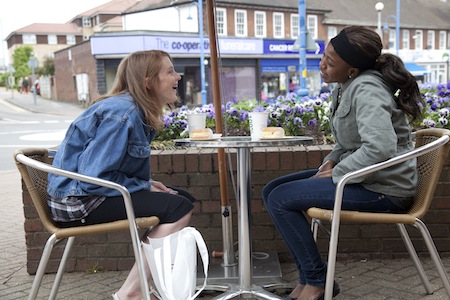
Seven years ago, no one could have imagined Martin* living anywhere but in residential care. The then 24-year-old, who is autistic and has a moderate learning disability, was exploited by ‘friends’ who dealt drugs from his housing association flat in London, leading him to lose his tenancy. Head to the Guardian Social Care Network for the rest of my piece on the importance of transition services when supporting the vulnerable to move from residential care towards more independent living.
Tag Archives: service users
I was in care, now I’m working to improve the system for looked-after children
Guest post by teenager Matt Langsford

I was in care due to my mother’s mental health problems – she is agoraphobic, has bipolar disorder and suffers from alcoholism. I’m back in contact with my twin sister but no one else in my family.
My care experience was poor. I was told by my care workers that I’ve had “bad luck” with carers as two of them were de-registered and a couple resigned with immediate effect. When I was homeless I slept under a bridge, in a shed and in a garage.
My experience at first made me not trust any authority figures and made me lose my confidence, but I’m putting that to good use to help improve services for looked-after children and young people. I work with the LILAC (Leading Improvements for Looked-After Children) project. I understand better what happened with my care, and I want to improve the care system.
LILAC is project funded by the Big Lottery Fund and hosted by the charity A National Voice (ANV) which ensures looked-after children and young people are involved in decisions about their care and in the practices of the services that look after them. I assess how well services involve their looked after young people, deliver participation and LILAC standards of care. I think the standards are important as they are key areas of involvement for young people and children. They help gauge how an organisation involves and includes their young people. I am one of 60 young care experienced people recruited as LILAC assessors and so far we have assessed 18 different care settings from fostering agencies to local authority care homes.
I heard about LILAC in January this year from a role I had with ANV as the West Midlands regional development coordinator. I did some research and applied for the post after thinking what a great opportunity to build on many of my skills and get employment and to meet some like-minded young people. I was then interviewed and selected to become an assessor. Getting to the training course was a race against time for me; I travelled throughout the night on a 12 hour journey to get to the course (half a day late!). The training course took place in Manchester and I was living in Aberdeen at the time.
I think that the hardest part of the course was the role-plays because I’m rubbish at acting. The most rewarding part was gaining my qualification, meeting new young people and meeting the great staff at the project.
I think what we do at LILAC is important because we are going in helping organizations and local authorities improve the services they provide to their looked after children and young people. An example of how important LILAC assessment is that Wigan were assessed at the start of the project and only achieved some of the standards, after the LILAC team fed back their recommendations, Wigan started to implement them. A year on Wigan invited LILAC back to re assess them and they have achieved all of the standards.
My first assessment was in Birmingham – a private fostering agency – I had a briefing meeting before the assessment and it all went great.
LILAC has helped me on personal level as the team has gone out of its way to support me, with advice on attending college and also they have helped me develop my skills. I wouldn’t be where I am today without the hard work and dedication from the LILAC team. It has made me more confident and helped me to trust people again; I can talk to the team whenever I need a chat to keep me sane.
My plans for the future are to finish my level two and three health and social care BTEC and go onto university next September to get my social care degree. I am continuing my voluntary work with the local Children in Care Council which is something I have done for the past three years now, I’ve been the chairperson and co-chair here and I do things from outreach work to managing our team and budget.
For me the general public see looked-after children as trouble-makers or problem children, this is wrong as most of us in care are in care as our parents can’t look after us. The media unfortunately plays a mostly negative role in portraying us, as they only show bad things and don’t promote any good stories of looked-after children and young people; I am trying to change this.
Fundraising: how to make friends and influence people
Given the dire state of funding in the charity and public sector, fundraisers (and by that I mean staff and volunteers – not chuggers) are working overtime with some fantastically inspiring and engaging events, some of which I’ve featured on this blog. One caught my eye, not least because its title sounds like a cross between a very fine record and a throat spray.
The Largactyl Shuffle is a series of regularly-held and increasingly popular guided walks, the brainchild of the brilliantly creative user-led charity CoolTan Arts which clearly has its tongue in its cheek and its feet in its walking boots. The charity’s event is named after the anti-psychotic drug, Largactyl; the medication’s possible side effects can include a distinctive shuffle.
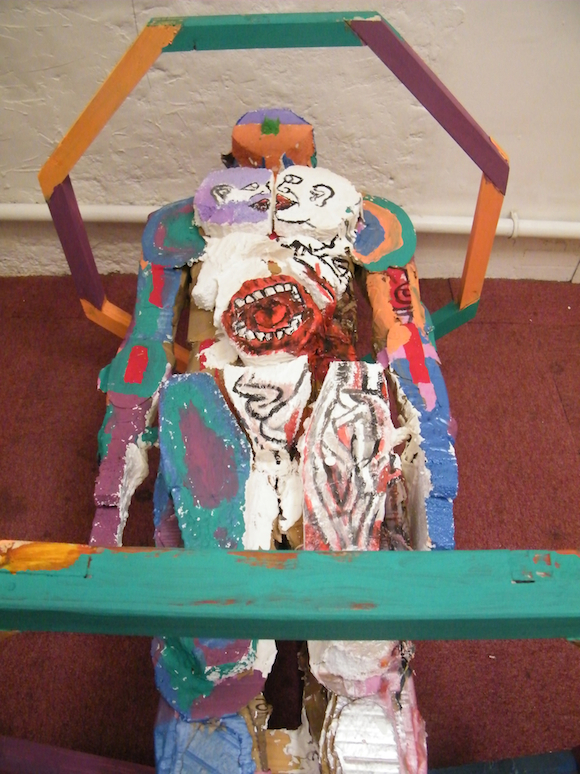
The guided stroll on Saturday October 15th is being held to mark World Mental Health Day, which is on the previous Monday (October 10th). The five-mile guided sponsored hike is from the Maudsley Hospital, Denmark Hill, south London, to Tate Modern, Bankside. The walks are gaining a reputation for being very social, entertaining events that bring together campaigners and raise the profile of mental health issues. The organisation was founded in 1990 by a group of artists who squatted in a suntan factory, which is how Cooltan Arts got its name.
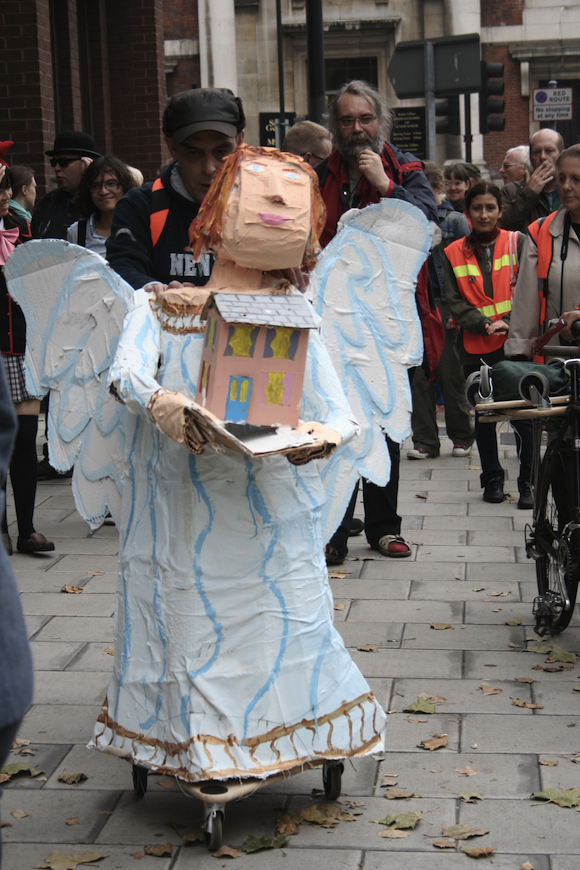
This year’s walk is entitled No Health without Mental Health and explores the history and social impact of the NHS since its inception in 1948. There will be breaks, poetry readings and other events along the route.
Comedian and broadcaster Arthur Smith, whose family and friends have experienced clinical depression, is the event’s patron this year. Smith’s fellow patrons at the charity are artist Maggi Hambling, TV chef Rosemary Shrager sculptor Sokari Douglas Camp, writer Ali Smith and novelist and Guardian columnist Clare Allan.
Advocating that mental wellbeing is enhanced by creativity, the arts and mental health organisation is run by and for people with mental distress. Its numerous workshops at its centre in Southwark’s Walworth Road include visual arts, batik, digital arts, video, poetry, and performing arts. There are also regular exhibitions, public art projects and websites which help break down the stigma of mental distress and the gallery and performance space offers other community projects a place to exhibit. The charity also runs volunteering schemes.
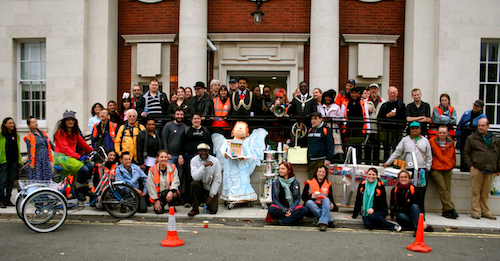
The walk, suitable for people with disabilities and wheel chair users, finishes with a reception and refreshments at Tate Modern.
• If you’re interested in taking part, download a form from www.cooltanarts.org.uk or call 020 7701 2696 or email info@cooltanarts.org.uk walkers must bring a packed lunch and drinks, wear suitable clothes and sensible footwear. The non-refundable registration fee is £5 unwaged or £10 waged.
A sporting chance for the homeless
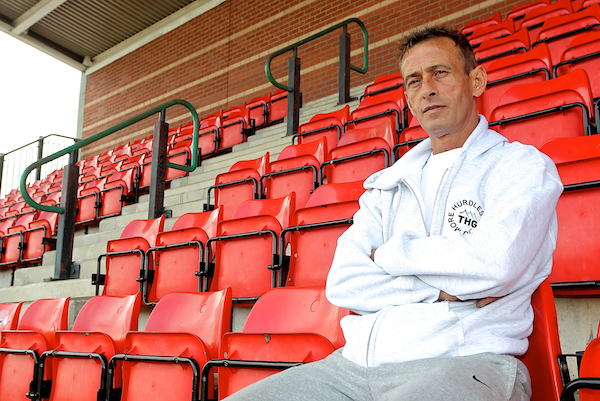
Any mention of “the games” and all eyes look to east London and this week, in particular, towards the newly-opened retail mecca and gateway to the games – Westfield.
But last week, the home of “the games” was the north west, as Liverpool hosted the second annual Homeless Games, a unique event that involved more than 400 people and has been dubbed locally as the Homeless Olympics.
Compared to next year’s sporting extravaganza, last week’s event might be short on history, size, razamatazz, budget and wholescale regenenerative impact, but it has heart and drive and the potential to support people towards a more stable life. It also boasts some native Liverpudlians and Olympic athletes as patrons (gymnast Beth Tweddle, boxer David Price and former high jumper Steve Smith).
Over two days last week, more than 400 people – those over 18-years-old who are homeless, or have been homeless in the last two years – participated in swimming, football, cycling, badminton. Alternative sporting events like chess, pool and tiddlywinks were also held at the competition at Wavertree Sports Park.
Eric Houghton, 46, from Anfield, began the Homeless Games after taking part in the 2002 Homeless World Cup. The father-of-two, now a support worker for homeless people, became homeless after family bereavements led him to spiral out of control and downward into alcohol abuse. When he got involved with the Homeless World Cup in 2002, the sporting and empowering event was the pivotal spark he needed to regain stability in his life.
Wanting to use the same approach on a more regional level, Houghton used a start-up grant from Cosmopolitan Housing Association to put together the first games last year. Competitors were given the opportunity to benefit from health services such as sexual health advice, diabetes screening and help with stopping smoking or tackling substance abuse.
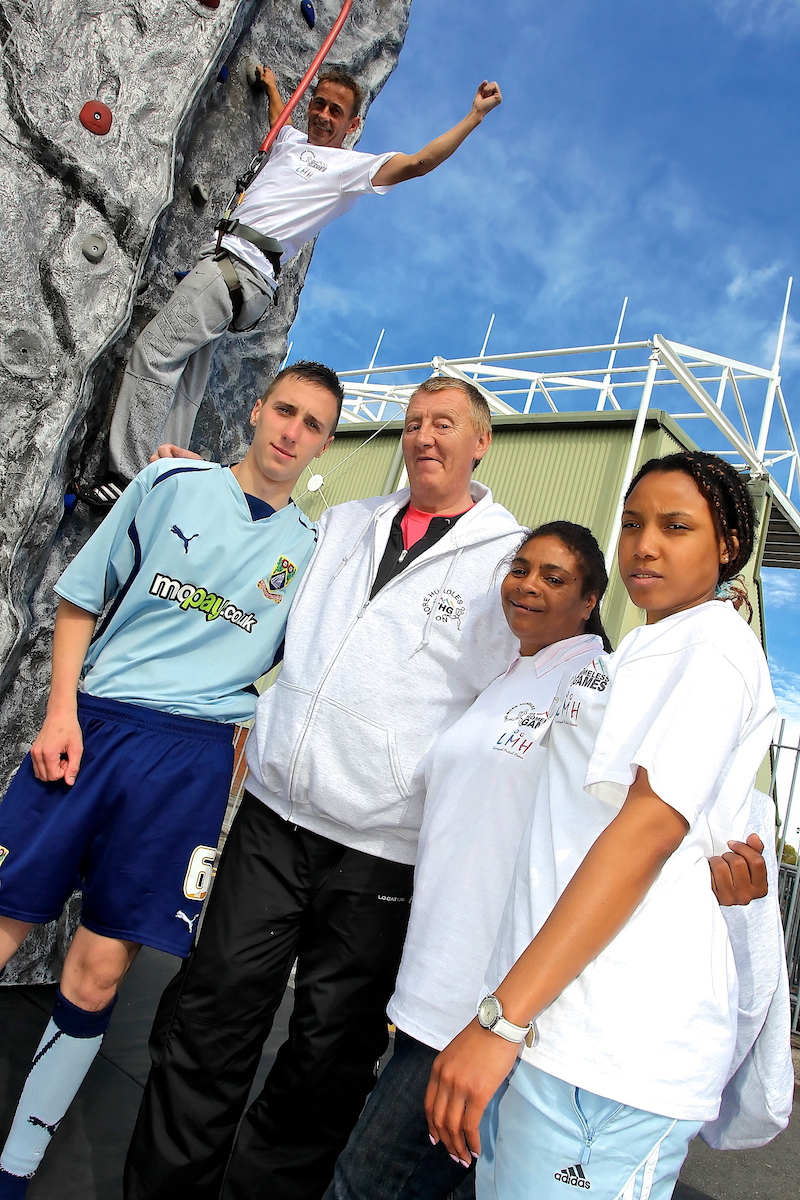
Houghton says: “Getting involved in something positive like sport can give homeless people the sense of self-worth and community that they need. Although the Games only lasted for two days, we hope the effects will last a lot longer, and show people how much they can achieve.”
Local organisations including housing associations, police, health and the city council helped support the event and there’s a short film here, made last year:
“As a child, I didn’t know what stigma meant – but I certainly knew how it felt”
Guest blogger Lol Butterfield, a mental health campaigner and qualified mental health nurse, explains his involvement with a national drive to tackle the stigma suffered by people with mental health issues. The campaign is driven by service users. Butterfield, who lives in Teeside, has written an autobiographical book which describes his experience of growing up with a mentally ill parent.

People experiencing mental illness are more likely to be the victim, rather than the perpetrator, of a serious crime. This criminalisation, mainly through the media, was one of the reasons I became involved in Time to Change and its Lived Experience Advisory Panel (LEAP).
LEAP is an advisory group of 12 people who shape the Time To Change programme, England’s largest mental health anti-stigma campaign. Time to Change began in 2007 funded through the Big Lottery and Comic Relief with £20 million of investment. Us “Leapsters” have extensive experience and knowledge of mental illness and a passion to put the record straight. We act as campaign ambassadors and spokespeople. With a diverse mix of expertise and good links to service user and carer networks, we work towards ensuring that service user and carers needs are at the heart of the campaign.
Over 30 years I’ve spent time working in mental health services as a qualified nurse. I have seen daily the stigma and discrimination faced by those who experience mental ill health and their families.
I’ve also been on the receiving end of this stigma myself. I experienced mental illness myself when in 2004 I had to take time off work with severe depression. I have worn the shoes of the nurse, and the patient. I can empathise with the one in four of the population who have also found themselves mentally unwell at some point in their lives.
My father also experienced mental illness and as a small child I recall the stigma surrounding this growing up in a small mining village in the north east. As a young boy I did not understand what the word stigma meant but I certainly knew how it felt at that time.
I have spoken to people who have been laughed at on the bus or been called names because people know they have mental health conditions. I know of those who have ever been told to sit in other areas of a pub, who have not applied for jobs because they fear being rejected when they disclose their mental health background. These people are vulnerable to abuse because their mannerisms. Ironically these mannerisms are often caused by their medication rather than the condition itself.
I became involved with LEAP because I saw an opportunity to positively and constructively use my experience, as both a nurse and someone with experience of mental ill-health, to make a difference.
I have presented at conferences telling my story and promoting the campaign message. I’ve taken part in TV and radio interviews, visited schools and colleges to raise awareness. Until recently, I was writing a bimonthly column for the local newspaper where I live in Teesside with the aim of tackling the negative stereotypical coverage we see all too often.
Three years ago, I decided to write Sticks and Stones, my autobiography, as another way of spreading the anti-stigma message. my childhood memories of growing up with a father who experienced mental illness and the stigma my family faced and I myself felt as a child. For me writing the book was also about encouraging others to follow my lead by using myself as a positive role model (ie someone who is trained as a mental health nurse and has experienced mental illness. I am very open about this in order to promote more acceptance from others)
Individually as well as collectively we can and will make a difference no matter how small. With imagination and creativity we can impact in those areas of society that discriminate and stigmatise.
It has not always been easy. The work I do can be stressful because often it is real people with real experiences at the core of what we do as a group, and I do as an individual. I have at times to be mindful of my own limitations and avoid pushing myself into the “dark place” of clinical depression again. That said my work gives me so much satisfaction and pleasure. To know my words and actions have made others think differently around mental health, and act differently in their treatment of those who are unwell, is reward in itself.
The work of LEAP has made a difference in that dedicated time and effort has ensured that the message is being delivered in many creative, diverse ways that otherwise may not have been. As Leapsters we cover all parts of England to touch as many people in as many regions as possible. Touching hearts and minds, promoting tolerance and understanding of mental ill-health. I believe we are teaching the next generation to act and behave differently, changing attitudes for the better.
The big society bypass
Above, Ian Harvey, from heroin and rough sleeping to charity volunteer, gardening enthusiast and Chelsea Flower Show winner.
The big society concept might be a touch nebulous – as its creator Philip Blond effectively admitted this week – but one transparent element is the fact that volunteers are its backbone.
The drive is a potentially all-inclusive one as the big society dream is of a volunteering renaissance that unites the young (nothing else paid on offer), the more mature (nothing else to do in well-heeled retirement) and the professional (nothing as good as a bit of CSR in the city to justify that fat salary and boost the CV).
But any official messages about big society bypass a huge swath of society; the homeless.
The vulnerable are excluded from the big society agenda and a potential volunteering resource remains untapped, as new research published this week by homelessness charity St Mungo’s argues. The organisation suggests that volunteering can help the homeless move from social exclusion to being active in their community.
Its figures show that only 14% of around 200 St Mungo’s clients and staff surveyed (84 of the 200 were clients) think homeless people are included in society. The report from St Mungo’s, Enough Room: is society big enough for homeless people?, has been released to coincide with the charity’s action week to raise awareness about the social exclusion of the homeless. According to the latest figures, 3,975 people were seen rough sleeping in 2010/11 on the streets of London – a rise of eight per cent from the previous year.
The charity says there’s a real wish among those it supports to give something back. Of the homeless clients surveyed, 70% wanted to volunteer to “give something back to their local community” or to “help other people.”
Investing time in supporting vulnerable people to volunteer can bring long-term benefits – stability, greater self-esteem and social integration and the chance to develop new skills.
I recently came across the Crown Centre in the deprived area of Stonehouse, Plymouth, for example. The centre supports vulnerable people through projects such as the Plymouth Foodbank, ensuring those in crisis do not go hungry. Every week, the centre relies on its 47 regular volunteers to run coffee and lunch clubs supporting 120 service users. Half the volunteers have health or dependency issues and are “supported volunteers”, needing more guidance and supervision than their peers donating time for free.
Back in London, St Mungo’s client turned volunteer Ian Harvey (scroll up to the video above), is the kind of volunteer we could have more of. Ian, a former rough sleeper and ex-heroin addict, has been supported by St Mungo’s to work with the charity’s community gardening scheme, Putting Down Roots. Ian has tuned his life around with specialist support and from involvement in the volunteering scheme; not so long ago he was self-harming and sleeping on the streets, now he’s the proud owner of a silver award from the Chelsea Flower Show and is looking forward to winning gold next time.
Roger is another St Mungo volunteer, a former drug-user who slept rough, he volunteers for the charity’s employment team and encourages clients to improve their basic computer literacy skills. He explains: “I realised that the key to me moving on with my life was training and qualifying. It also became very clear that I would get nowhere without knowing my way around a computer …Since November last year, I have been volunteering for St Mungos’ employment team and have been helping more clients get online with weekly drop in sessions and support with basic computing courses.”
Lorette, a volunteer peer advisor with St Mungo’s resettlement service, explains the strength of the ex-homeless supporting those who still need support: “I think the client feels they can relate to you more if you have been through what they have. You can swap stories and experiences, which I think enables them to open up to you more…Volunteering is great for your self esteem and confidence, especially if you have been out of work for a long time, there’s new skills to learn, great people to meet and a great feeling of self worth that you really are helping people and doing something really worthwhile.”
Yet so far the big society drive has largely failed to include or capture the attention of the vulnerable. As the St Mungo’s research demonstrates, the neediest in society neither feel part of the campaign nor understand what it stands for (although frankly they’re not alone in that latter complaint). A big society, but one that’s currently too small for the vulnerable.
“I feel privileged to be different; I wouldn’t want to be the same as everyone else.”
Above, a film about the making of a play about Down’s Syndrome at a Camphill Village Trust community, The Grange in Gloucestershire.
Today’s the start of Learning Disability Week. What’s it like living with a learning disability? A few years ago, my sister, who has Fragile X syndrome, spotted the teenager next door embark on her first driving lesson. “I’ll never do that,” she quietly remarked. Quick as a flash, my mother replied: “You might not, but there’s plenty of other things you do brilliantly.”
Another time she asked why she had Fragile X syndrome. A plain, simple question and one that the rest of us asked for some time after her diagnosis (the answer: the genetic lottery). That was a tricky moment – it wasn’t that she required a literal explanation of the genetic make up that set her apart, but she was struggling to make sense of why there were certain things she found difficult to do and certain situations she felt uneasy in.
Unable to avoid some cliches, we explained that everyone’s different – wouldn’t the world be a boring place if we were all the same? – and talked about her amazing achievements which regularly leave us awe-struck, biodynamic farming among them.
If you’ve no experience of learning disability, you might assume that people like my sister potter along aimiably, existing in a smiley, hand-flapping, blissful state of ignorance, unable to articulate or appreciate the extent of their special needs.
The illuminating and moving film, above, about the making of a play about Down’s Syndrome at a Camphill Village Trust community, The Grange in Gloucestershire, lets the actors speak for themselves:
“I can’t be like Robin or Claire; I’m different.”
“It feels weird being with Down’s Syndrome.”
“To be honest, I feel quite privileged to be different; I wouldn’t want to be the same as everyone else really.”
The playwright, whose brother has a learning disability, recalls the days when those with learning disabilities were ushered away from mainstream society: “I was seven and he was nine when we were separated…my brother was tucked away in a sheltered workshop.. he would be a footnote..something to be forgotten.”
While grim institutional care is no longer the only option for people with learning disabilities, the horrific goings-on at the Winterbourne View care home and new Mencap research on disability hate crime are just two reminders of the massive problems that remain.
For me and my family, the awareness week that starts today means not only appreciating the scale of the challenge when it comes to creating a fairer society for the learning disabled – and demanding action – but celebrating the achievements of those we feel proud to call “different”.
Illegal immigrants:not as simple as sending them all home
Peter Solomon, 46, is a former trade union representative who spent 17 years in the transport sector. He is a hardworking taxpayer and father-of-three who, until recently, worked as a security guard in Manchester where he rented a flat. He is also an illegal immigrant.
Some illegal immigrants should be returned home, according to an IPPR report seized on by the government to support its hardline stance. But it’s not that simple, as I explain in this piece in Society Guardian today.
The cuts: the worst is yet to come
An authoritative analysis in today’s Society Guardian of the deepest spending cuts in a generation, which start from Friday. The special issue inludes some sector by sector breakdowns of savings and job losses, including pieces I contributed to the in-depth coverage.
The cuts – an alternative
For those who’ve not already seen it, this powerful film presents an alternative to the government’s devastating cuts agenda. It features community groups and anti-cuts campaigners along with Bill Nighy, Radiohead’s Ed O’Brien and Zac Goldsmith MP. Worth watching ahead of this weekend’s demo in London against the cuts.
It Cuts Both Ways…The Alternatives from Oonagh Cousins on Vimeo.
